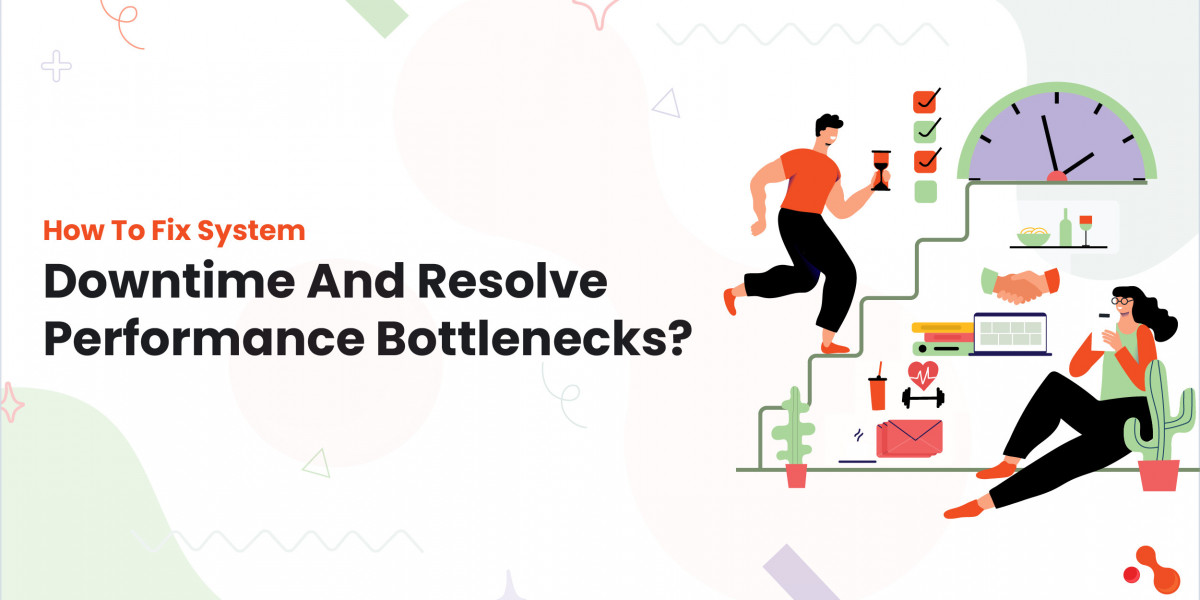Introduction
To fix system downtime, you must first understand what causes it, and how fast it drains credibility, revenue, and user trust. Despite a modern tool stack, many digital platforms still collapse due to avoidable missteps. Even with advanced cloud hosting, platforms fail to prevent unplanned downtime because the fundamentals remain unchecked.
These aren't just technical flaws, they’re strategic blind spots. Founders, CTOs, and product engineers often underestimate early signs of system scalability, resource misallocation, or dependency delays, which directly prevent teams from implementing strong downtime prevention strategies.
This guide reveals the overlooked flaws, skipped checks, and false assumptions that lead to preventable failures. You’ll learn exactly where things break and what to deploy, just keep reading the blog!
Understanding the Root IT Downtime Causes
Most outages don’t begin with a server crash, they start with overlooked warnings, skipped safeguards, and false assumptions. One of the most common IT downtime causes is human error, including accidental misconfigurations, flawed deployment scripts, or missing backup validation.
Hardware issues and software bugs contribute equally. A single failing SSD, unstable third-party service, or race condition in production code can delay transactions and degrade availability. But in most cases, the real failure lies in planning, not technology.
Effective downtime mitigation techniques for systems include dependency audits, rollback-ready deploy pipelines, and threshold-based alerting setups. These must be thoroughly configured before system launch. In their absence, a system may face recovery slows, root causes remain hidden, and incidents multiply. Businesses that focus early on reducing downtime risks apply stress tests, rollback integrity tests, and monitoring system saturation patterns.
Most Common Mistakes Creating Obstacles to Fix System Downtime
Downtime doesn't just happen, it results from a series of preventable mistakes.
Understanding these common pitfalls is crucial for implementing effective downtime prevention strategies for your system. Addressing these common mistakes with proactive measures and strategic planning is essential for reducing downtime risks and ensuring system resilience.
1. Neglecting Regular Maintenance
In a system, regular maintenance is essential for reducing downtime risks. Failing to perform routine system checks and updates can lead to unexpected failures.
2. Inadequate Testing Before Deployment
Deploying untested or poorly tested code can introduce bugs into the production environment, leading to system outages. Implementing thorough testing protocols is a key technique to fix system downtime mitigation to prevent further issues.
3. Lack of a Robust Downtime Recovery Plan
Without a well-defined recovery strategy, organizations may struggle to restore services promptly during an outage. A comprehensive recovery plan to fix system downtime is vital for minimizing the impact of system failures.
4. Overreliance on Manual Processes
Manual interventions are prone to human error, which can cause or exacerbate system downtime. Utilizing enhanced automation techniques by automating routine tasks helps in preventing unplanned downtime.
5. Ignoring Early Warning Signs
Over-looking minor performance issues or system alerts can allow problems to escalate into major outages. Proactive monitoring is essential for server downtime prevention within a system.
Case Study Examples: How Companies Made It Big?
#1 Netflix’s Journey to Scaling Efficiently and Larger than Life!
Background
Netflix transitioned from a DVD rental service to a global streaming giant, facing major system scalability challenges as its user base grew exponentially. Early bottlenecks included server overloads during peak hours, slow content delivery, and inefficient database queries, leading to buffering and service outages.
1. Identifying Bottlenecks
Netflix used performance monitoring and load testing techniques to pinpoint critical issues and eliminate performance bottlenecks:
- Database Overload: Slow query execution due to unoptimized schemas and lack of indexing.
- Monolithic Architecture: Tightly coupled systems caused cascading failures during traffic spikes.
- Network Latency: Users experienced buffering due to centralized data centers.
- Tools like Prometheus and Distributed Tracing (Jaeger) helped track request paths and identify slow components.
2. Solutions Implemented:
A. Cloud Migration & Microservices
AWS Adoption: Migrated to AWS for elastic scaling, leveraging auto-scaling groups to handle traffic spikes.
Microservices Architecture:
- Decoupled the monolithic system into 700+ independent services (e.g., user authentication, recommendation engine).
- Used Apache Kafka for asynchronous communication between services to reduce bottlenecks.
B. Database Optimization
- Sharding: Split databases by user regions to distribute load.
- Caching: Deployed Redis to cache frequently accessed content, reducing database hits by 60%.
- Query Tuning: Optimized slow queries using indexes and execution plan analysis.
C. Content Delivery Networks (CDNs)
Deployed Open Connect (Netflix’s CDN) to cache videos at edge locations, cutting latency by 70%.
D. Automated Scaling & CI/CD
- Kubernetes: Automated container orchestration for seamless scaling of microservices.
- Chaos Engineering: Simulated failures using tools like Chaos Monkey to test resilience.
- CI/CD Pipelines: Automated deployments reduced system downtime during updates.
3. Results
A quick table to help you understand better the impact of scalability metrics adopted by Netflix:
- Peak Traffic HandlingBefore: Frequent outages during spikesAfter: Zero downtime during global streaming peaks
- LatencyBefore: 500–1000msAfter: <100ms via CDNs
- Database QueriesBefore: 10 sec execution timeAfter: <1s with indexing and caching
- Deployment SpeedBefore: Hours per updateAfter: Minutes via CI/CD
Key Takeaways:
- Modular Design Implementation: Decoupling systems into microservices enabled independent scaling.
- Proactive System Monitoring: Real-time metrics and chaos testing preempted bottlenecks.
- Hybrid Scaling: Combined horizontal scaling (AWS) with vertical optimization (caching, CDNs).
Netflix’s approach demonstrates that fixing system bottlenecks through cloud elasticity, architectural redesign, and automation is important for sustainable scalability. By addressing bottlenecks systematically, businesses can achieve Netflix-level scalability while maintaining performance.
Lessons for Startups:
- Start with load testing to identify weak points early.
- Prioritize tools like Kubernetes and Redis for automated scaling.
- Invest in CDNs and caching to reduce latency and infrastructure costs.
#2 AutoX Successful Integration Into a Single Platform
Background
AutoX, a leading battery manufacturer, partnered with GrowthTech to develop DataX. The system aimed to integrate various production processes into a single platform.
Key features and outcomes include:
- Leveraging AI and Data Analytics.
- Implemented AI algorithms to analyze production equipment data.
- Predicted potential breakdowns, enabling proactive maintenance.
- IoT Integration within the system processes.
- Leveraged IoT devices to collect real-time data from manufacturing processes.
- Provided insights to enhance production efficiency.
- Thoroughly configuring bottlenecks and introducing performance improvements.
- Reduced machine downtime by 30-50%.
- Extended equipment lifespan by 20-40%.
- Adopting a scalable system architecture.
- Utilized microservices for flexible scaling of different system components.
- Implemented horizontal scaling to distribute workloads across multiple servers.
By addressing bottlenecks through AI-driven analytics, IoT integration, and scalable architecture, AutoX significantly improved its manufacturing efficiency and reduced costs.
How to Fix System Downtime: What Actually Works?
Downtime cannot be solved with guesswork, it requires structured action, precision, and business predictability. To fix system downtime, you must focus on the weak links in system performance, recovery, and prevention.
These are the most effective system scalability solutions proven to reduce outage incidents within the architecture,
1. Implement Proactive Monitoring Systems
Real-time observability helps detect anomalies before they spiral into service-level failures. Advanced APM tools track memory saturation, request spikes, and latency trends across all critical components. This is one of the most reliable system outage solutions to detect and respond to downtime triggers early.
2. Regularly Update and Patch Systems
Keeping software, libraries, and firmware current is essential to prevent silent service breakdowns. Outdated components often contain known vulnerabilities that attackers can exploit or that simply crash when the system is under load. Patch management directly supports downtime prevention strategies by closing gaps before they’re exploited.
3. Establish a Robust Downtime Recovery Plan
A precise downtime recovery plan enables developers and operators to act fast when systems fail. The plan must include failover protocols, communication workflows, escalation chains, and rollback steps. It helps eliminate hesitation during real incidents through dry runs.
4. Automate Routine Processes
Automation ensures that scaling, restarting, or rerouting actions are predictable, fast, and safe. This key technique in downtime mitigation reduces human error, the top cause of downtime in modern IT stacks.
5. Conduct Regular Training and Incident Drills
Preparedness is the backbone of operational resilience. Conducting regular drills allows developers and operators to simulate system failures and learn to handle downtime fixes under pressure.
6. Utilize Redundant Systems and Failover Paths
Redundancy ensures traffic or processes can reroute if a node, service, or storage layer fails. This includes load balancers, geo-distributed databases, and mirrored backups.
7. Continuously Improve from Past Incidents
Post-outage reviews must lead to real action, not just documentation. Each incident teaches new patterns about what failed, how fast recovery happened, and what blind spots remain.
Downtime Prevention Strategies for Future Readiness
Planning for proper system resilience starts way before a failure occurs or develops. These targeted strategies help strengthen systems from within and significantly reduce downtime risks,
1. Deploy Stress Testing Before Launch
Simulate real-world load conditions to identify system weaknesses early. Use chaos testing and peak load simulations to validate performance under pressure. It’s one of the most critical downtime mitigation techniques for production-grade readiness.
2. Architect for Failure and Recovery
This approach supports both server downtime prevention and predictable failover behavior. Design every service assuming it will fail, and define what happens next. Auto-restart, retry logic, and circuit breakers support continuous operation.
3. Use Predictive Monitoring Over Static Alerting
Modern systems should anticipate failure patterns, not just react after incidents. ML-based observability platforms help track early indicators like error rate spikes and memory leaks. This strategy ensures smarter, real-time system downtime fixes.
4. Apply Load Balancing Across All Entry Points
Distribute requests intelligently across services to avoid resource saturation. Load balancers and edge proxies are essential components of any effective downtime prevention strategy. They help the system scale horizontally and isolate potential failures.
Bottomline
System downtime is never accidental, it’s always the result of overlooked flaws, rushed deployments, or missing safeguard systems!
The cost of unplanned outages grows with scale, often eroding user trust and operational confidence in seconds. To consistently fix system downtime, one must go beyond patchwork fixes and address the architecture, monitoring, and response loop.
Most IT downtime causes originate from human error, weak automation, or under-tested rollouts. Without a proactive mindset, businesses repeatedly fall into the same traps, like late alerts, reactive patching, and poor rollback mechanisms.
Implementing prevention strategies for system downtime and preparing a tested downtime recovery plan is essential to sustain steady scalability. Organizations that invest in smart monitoring, redundancy, and automation techniques reduce the occurrence of major system failures.
Whether it’s server downtime prevention or handling user surges without slowdowns, the path is clear: prevent what you can, prepare for what you can’t.
Original Source: https://medium.com/@mukesh.ram/how-to-fix-system-downtime-and-resolve-performance-bottlenecks-a6a1ed46aabf










